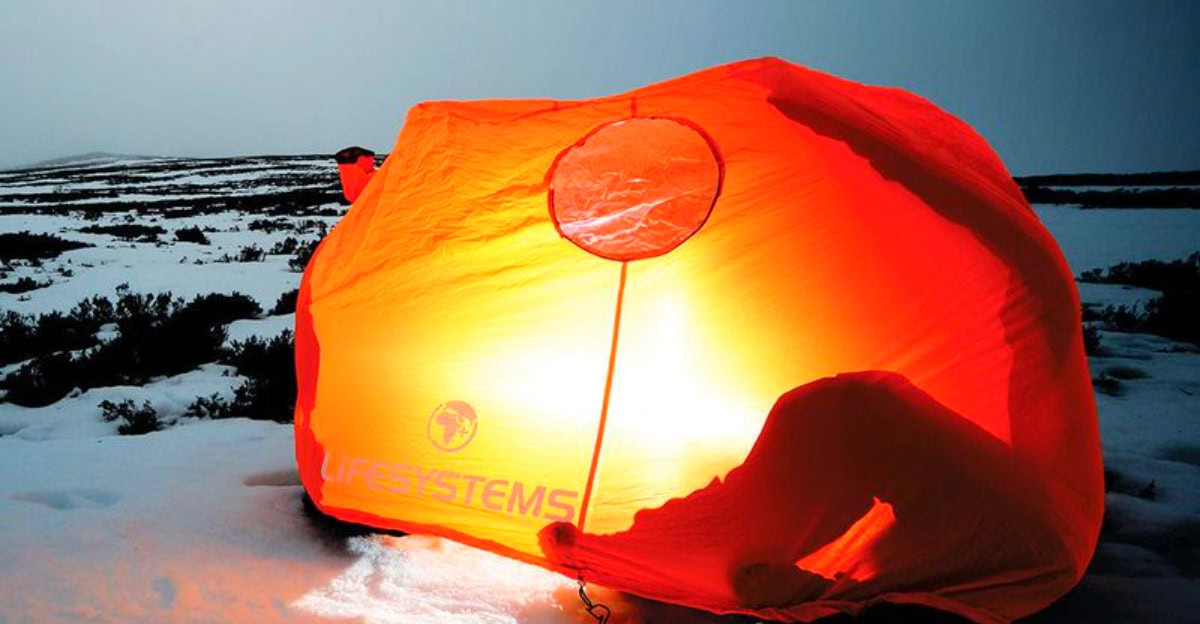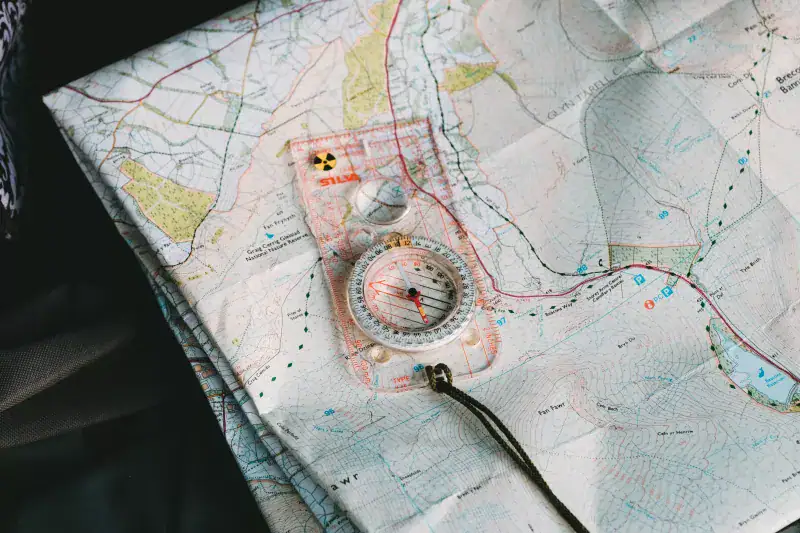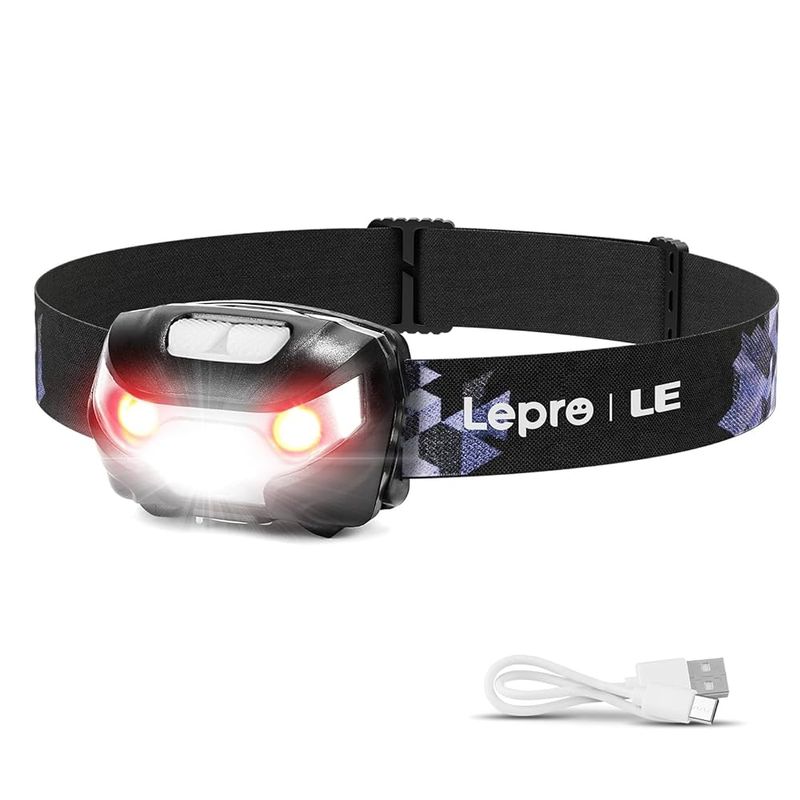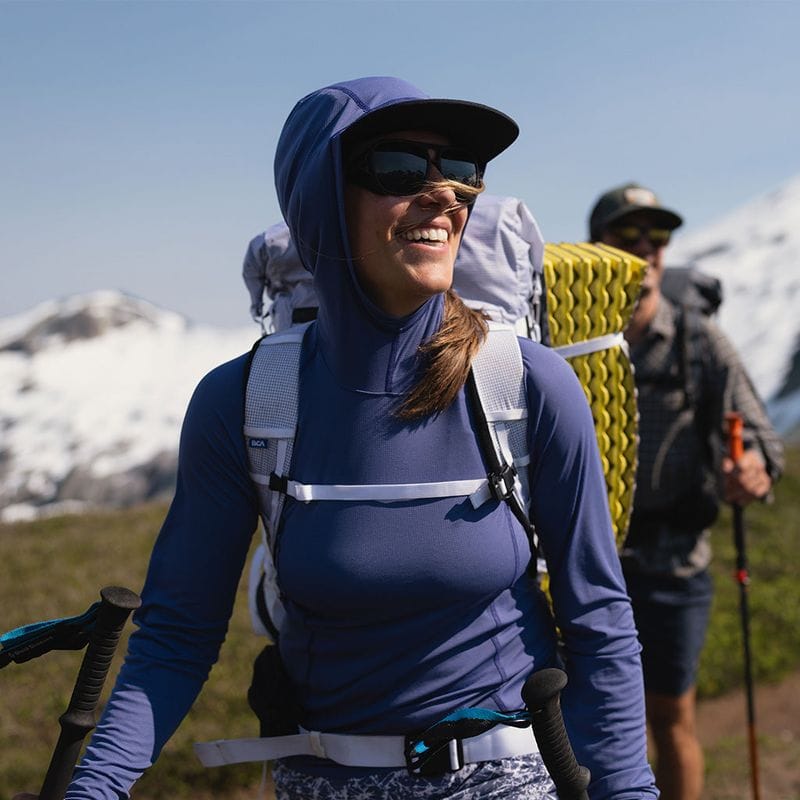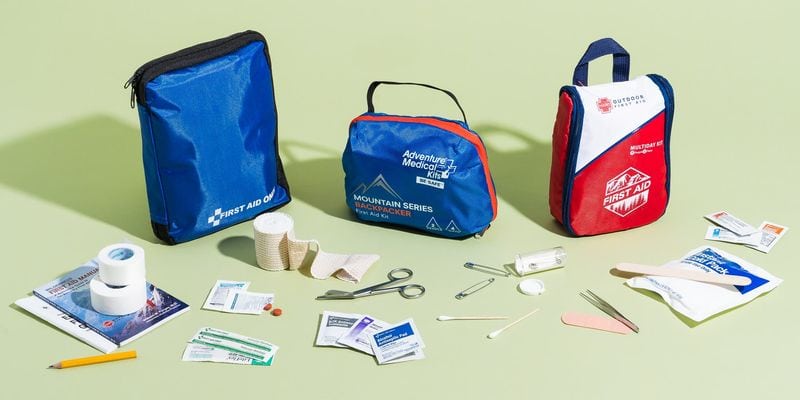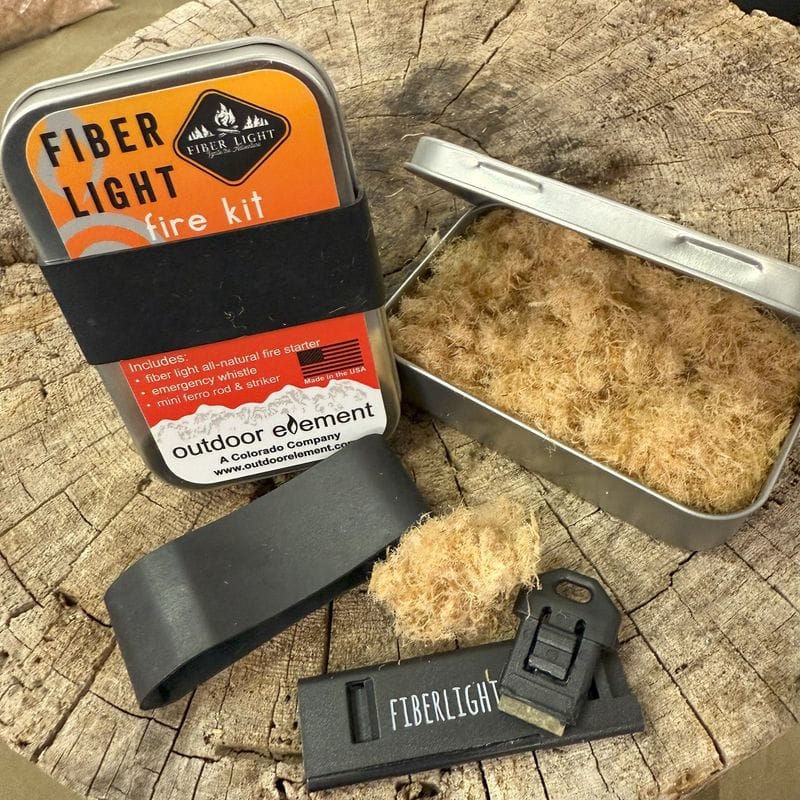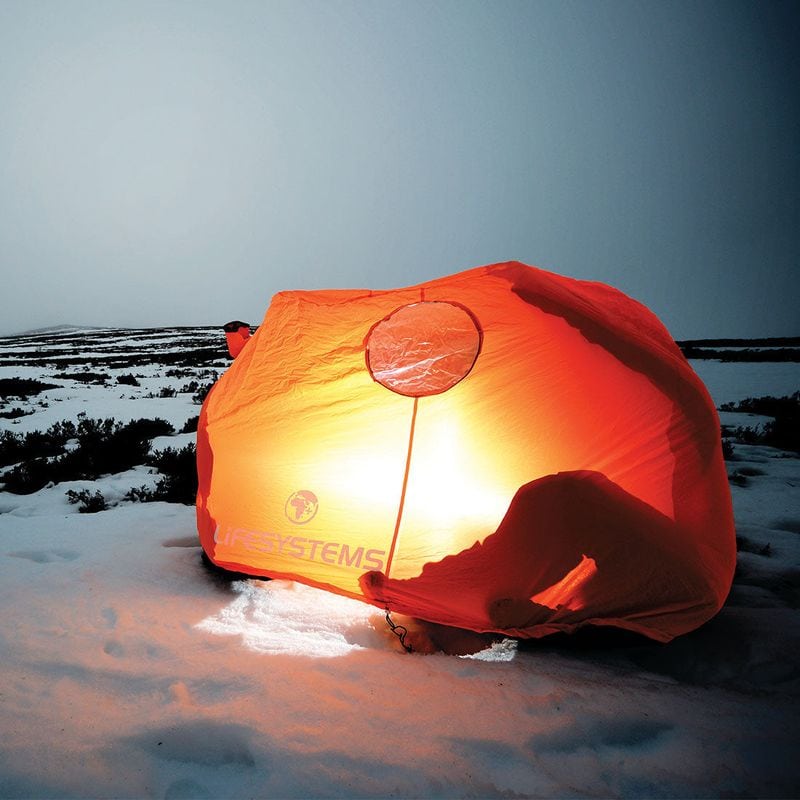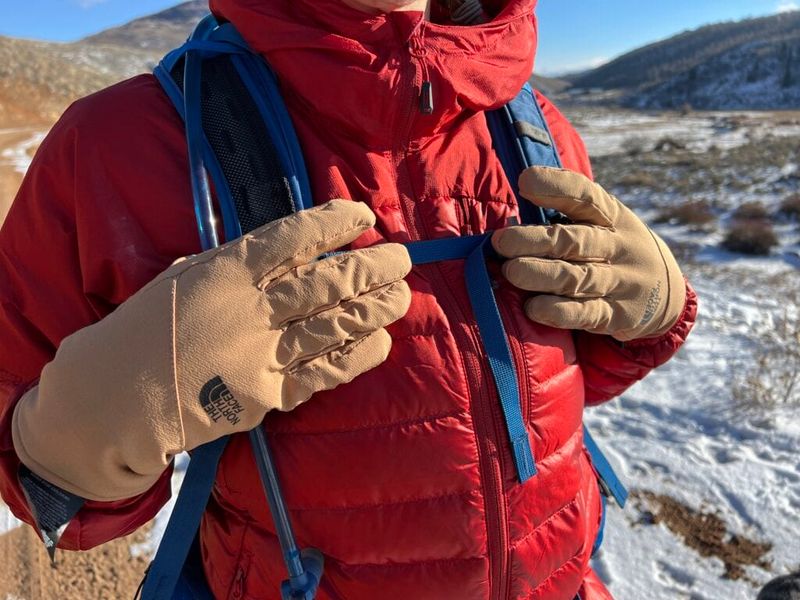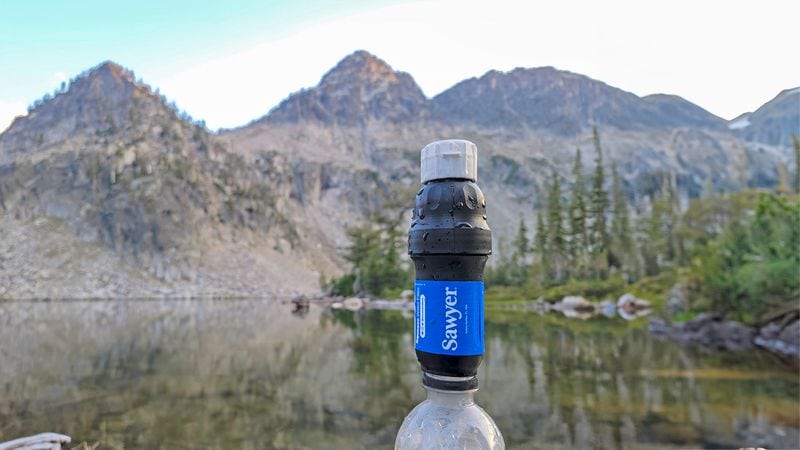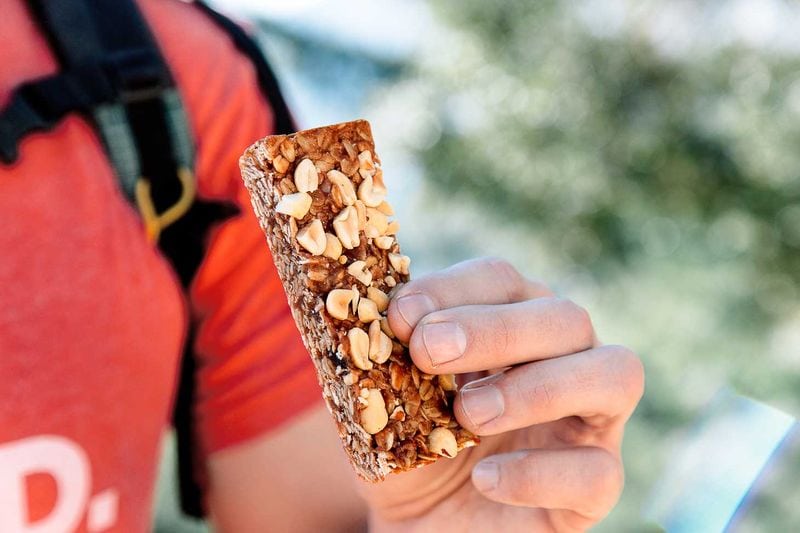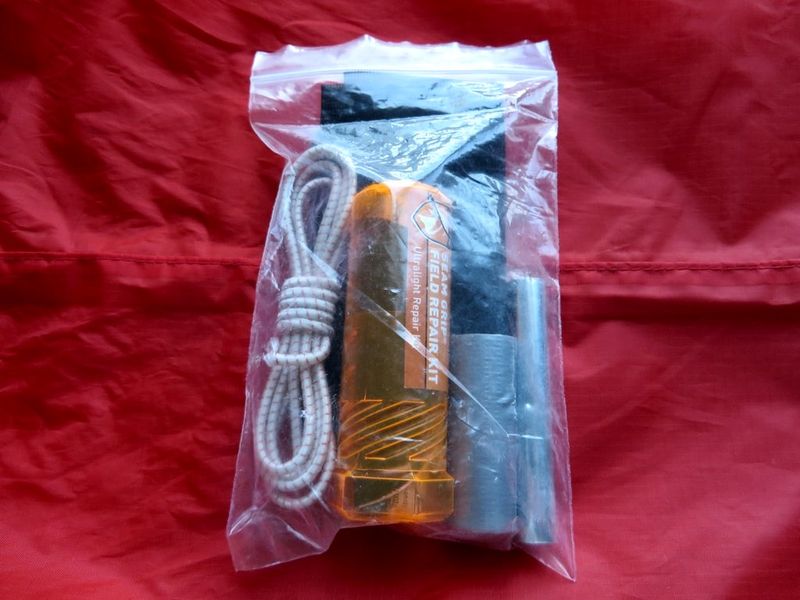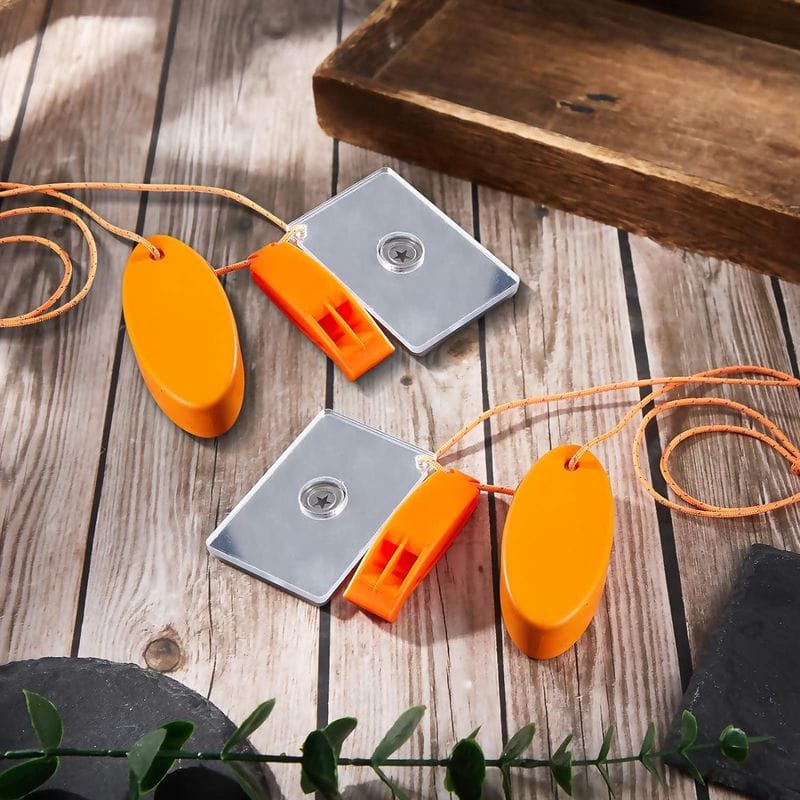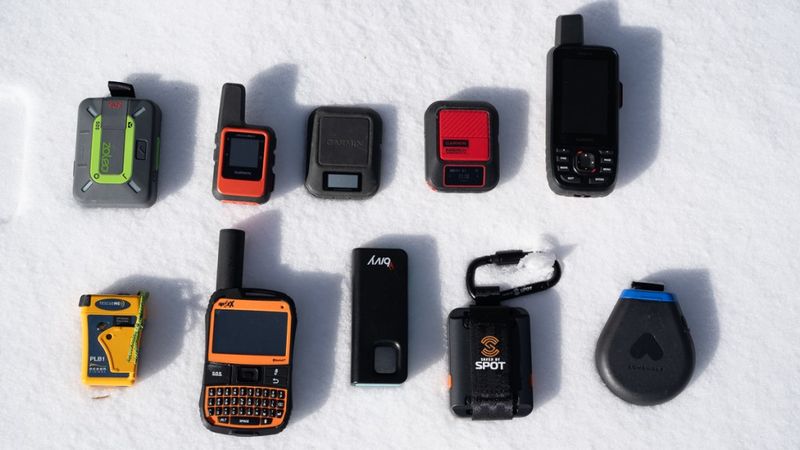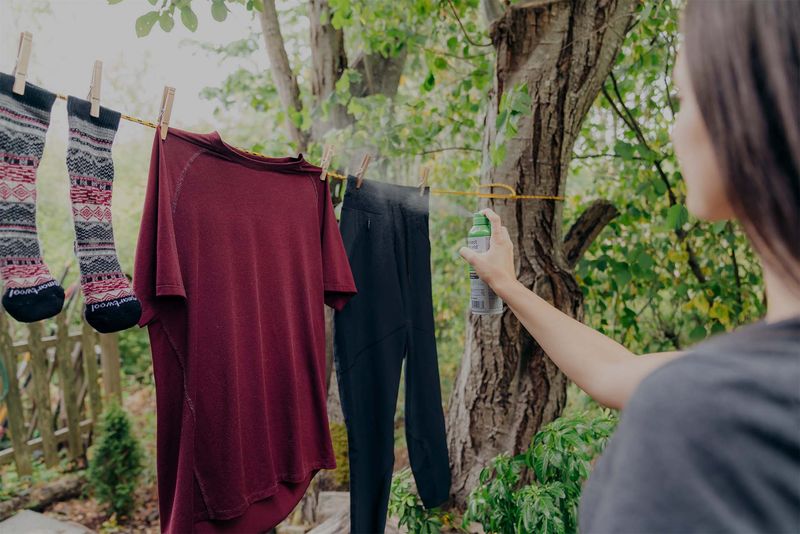Getting lost in the wilderness or caught in bad weather can turn a fun hiking trip into a dangerous situation. Smart outdoor lovers know that carrying the right safety gear makes all the difference between a minor problem and a serious emergency. Having these essential items in your backpack helps you stay safe, handle unexpected challenges, and enjoy your outdoor adventures with confidence.
1. Navigation Tools: Paper Map and Compass (Plus Optional GPS)
Your smartphone might be smart, but it becomes useless when the battery dies or you lose signal in remote areas. A topographic map and baseplate compass never need charging and work anywhere on Earth.
Learning to read contour lines on a topo map helps you understand the terrain around you. The compass points north no matter what, giving you a reliable direction reference.
While GPS devices and offline map apps make great backup tools, they should never replace your primary navigation system. Practice using your map and compass at home before heading into the backcountry.
2. Headlamp with Spare Batteries
Darkness falls faster than you think in the mountains, and stumbling around with a phone flashlight is both dangerous and battery-draining. A headlamp keeps your hands free for cooking, setting up camp, or treating injuries.
Modern LED headlamps are lightweight, bright, and long-lasting. Choose one with multiple brightness settings to conserve battery life when you need just a little light.
Always pack extra batteries in a waterproof container. Cold weather drains batteries faster, so keep spares warm inside your jacket pocket during winter adventures.
3. Sun Protection: Sunscreen, Sunglasses, Hat, and UPF Clothing
Mountain sun is no joke – you can get severely burned even on cloudy days because UV rays bounce off snow, water, and rocks. Sunscreen with SPF 30 or higher protects your skin from harmful radiation.
Quality sunglasses block UV rays and prevent snow blindness or eye strain from bright reflections. A wide-brimmed hat shields your face, ears, and neck from direct sunlight.
Long-sleeved shirts and pants with UPF ratings provide excellent protection without the mess of constantly reapplying sunscreen. Remember to reapply sunscreen every two hours, especially after sweating.
4. First Aid Kit with Blister Care and Personal Medications
Cuts, scrapes, and blisters happen on almost every outdoor trip, but a well-stocked first aid kit turns these minor injuries into quick fixes. Include bandages, antiseptic wipes, medical tape, and pain relievers.
Blister treatment deserves special attention since foot problems can end your adventure early. Pack moleskin, blister pads, and extra tape specifically for foot care.
Add any personal medications you take regularly, plus extras in case your trip runs longer than planned. Include nitrile gloves and a basic first aid guide to help you treat injuries properly.
5. Fire-Starting Kit
Fire provides warmth, light, cooking heat, and psychological comfort during emergencies. Wet conditions make starting fires challenging, so carry multiple ignition sources like waterproof matches and a butane lighter.
Tinder materials such as dry birch bark, fatwood shavings, or commercial fire starters help get flames going quickly. Store everything in a waterproof container to keep it dry.
Practice building fires in different weather conditions before you need this skill in an emergency. Always check local fire restrictions and use established fire rings when available to protect the environment.
6. Emergency Shelter
Weather changes quickly in the mountains, and an unexpected storm or injury might force you to stop before reaching your planned destination. An emergency bivy sack or space blanket weighs almost nothing but can save your life.
These lightweight shelters reflect body heat back to you and block wind and rain. They are not comfortable for long-term use but provide crucial protection during emergencies.
Practice setting up your emergency shelter before you need it in bad weather. Some models work better than others in different conditions, so read reviews and choose quality gear.
7. Extra Insulation and Clothing Layers
Mountain weather changes without warning, and getting caught in a sudden storm wearing only shorts and a t-shirt can lead to hypothermia. Pack extra layers including a warm hat, gloves, and insulating jacket.
Synthetic materials or merino wool work better than cotton because they keep you warm even when wet. Extra socks prevent blisters and keep your feet comfortable during long hikes.
The key is layering – you can add or remove clothes as conditions change. A lightweight rain jacket and warm mid-layer handle most weather surprises you might encounter on the trail.
8. Hydration System Plus Water Treatment
Dehydration happens faster than you think, especially at high altitude or in hot weather. Start your hike well-hydrated and plan to drink about half a liter per hour during moderate activity.
Carry more water than you think you need, then bring a way to treat natural water sources you might find along the trail. Water filters, purification tablets, or UV sterilizers all work well.
Know where water sources are located along your route, but never count on finding them – streams dry up and springs stop flowing. Boiling water for one minute also kills most harmful bacteria and viruses.
9. Extra Food: High-Calorie, No-Cook Options
Your body burns way more calories hiking uphill with a heavy pack than sitting at home, and running out of energy in the backcountry creates serious problems. Pack extra food beyond what you planned to eat.
Choose calorie-dense options that do not require cooking – nuts, energy bars, dried fruit, jerky, and chocolate all provide quick energy. These foods store well and taste good when you are tired and hungry.
Calculate about 2,500-4,500 calories per person per day depending on your activity level and body size. Extra food also helps keep morale up when things go wrong on the trail.
10. Repair Kit and Multi-Tool
Gear breaks at the worst possible moments – backpack straps snap, tent zippers jam, and stove parts come loose. A small repair kit with duct tape, zip ties, safety pins, and paracord fixes most problems.
A quality multi-tool or knife handles cutting tasks, food preparation, and gear adjustments. Look for models with pliers, scissors, and multiple screwdriver bits to handle various repairs.
Duct tape wrapped around your hiking poles saves space and weight while keeping this super-useful repair material handy. Practice using your tools at home so you know how they work when you need them.
11. Signaling Devices: Whistle and Signal Mirror
If you get lost or injured, rescuers need to find you quickly. Three sharp whistle blasts repeated every few minutes is the international distress signal that carries much farther than shouting.
A signal mirror reflects sunlight for miles and can catch the attention of aircraft or distant rescue teams. Practice aiming the reflected light beam – it takes some skill to point it accurately.
Both items weigh almost nothing but dramatically improve your chances of being found during an emergency. Attach your whistle to your pack so it is always within reach, even if you become injured.
12. Communication and Location Backup Devices
Cell phones work great for calling for help, but only when you have signal coverage. Many wilderness areas have zero cell service, leaving you completely cut off from the outside world.
Personal locator beacons and satellite messengers work anywhere on Earth and can summon rescue teams even when your phone shows no bars. Register your PLB with NOAA so rescuers know who you are and who to contact.
Keep your phone in airplane mode to save battery, and bring a portable charger or solar panel for longer trips. Download offline maps before leaving home as backup navigation.
13. Insect Protection: Repellent and Protective Clothing
Mosquitoes, ticks, and biting flies can make outdoor adventures miserable and spread serious diseases like Lyme disease and West Nile virus. EPA-registered repellents with DEET or picaridin provide the best protection.
Apply sunscreen first, then insect repellent on top to ensure both work properly. Long pants and long-sleeved shirts create physical barriers that bugs cannot bite through.
Check yourself for ticks every evening and remove them promptly with fine-pointed tweezers. Some areas have seasonal insect problems, so research your destination and pack accordingly for maximum comfort and safety.
